Any RC question related, involving gas powered or electric cars,helicopters, airplanes, and boats please post here!
Popular RC Car Brands:
CT RC TRACKS:
Www.brcro.com (Bethel,CT)
http://www.rchr.biz/ (waterbury,CT)
http://www.rcmadness.com/ (Enfield,CT
http://www.controlfreakz.com/ (Chaplin,CT)
LOCAL HOBBY SHOPS
http://www.timemachinehobby.com/ (Central Manchester)
http://www.danburyhobbycenter.com/ (Danbury,CT)
http://www.wolcotthobby.com/ (Wolcott,CT)
www.pinshophobbies.com (Goshen,CT)
www.hobbytownusa.com (Stamford, Fairfield, Brookfield,CT)
http://www.rchobbiesandmore.com (Winsted,CT)
INTERNET STORES
Electric RC CAR:(Tamiya Brand)

Nitro Powered RC CAR:(Hpiracing brand)
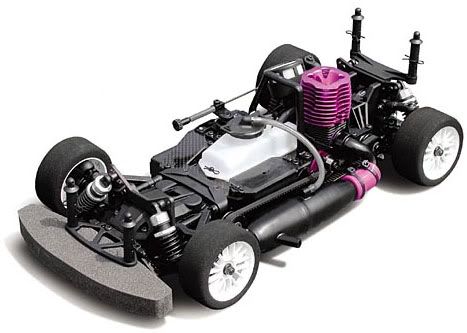
Introduction
Drifting is the driving art derived from Japanese touge (mountain) and European rally drivers. These drivers figured out that sometimes, pitching a car sideways enables one to get through a turn faster, and have a higher exit speed as opposed to the normal grip racing line.
That being said, today’s image of drift involves flashy RWD cars, insane amounts of tire smoke, and race circuits. Such can be seen thanks to events such as the D1 Grand Prix and Formula D. This form of drifting, where showmanship counts more than actually losing one’s pursuer, is the basis where RC drifting is originated.
The Cars
As said many times in RC, ANY RC car can be used to drift, but hobby-grade 4WD cars are preferred, which applies to the rest of this FAQ from this point on.
Now you may be asking, “If real cars drift using a RWD drivetrain, what is the purpose of a 4WD RC drivetrain?” Simply put, RC cars have different dynamics as opposed to a full-scale car. As most all RC cars have most of their weight centralized toward the rear of the car, think of an MR-2, drifting a RWD chassis would be incredibly hard and require countless hours of suspension tuning, much like a 1:1 MR-2. 4WD RC cars take advantage of the power transferred to the front wheels to pull the car out of the corner.
Now that that’s taken care of, let’s discuss electric and nitro cars, their advantages and disadvantages, and the most popular cars.
Electric RC cars
Electric RC cars are the most common RC drift cars. Everyone will have their personal opinions as to why, but the most common reasons are less maintenance, and the ability to run almost anywhere.
As great as electrics are, there are some downsides, which will now be discussed. One of the greatest disadvantages of an electric chassis is the fact that, compared to nitro cars which will be discussed later, you will have to spend more money at one time. This is because, unless your kit already comes with them, you will need to buy an electronic speed control (ESC), batteries, and an appropriate battery charger. Also, electrics don’t have the capability to produce the sounds and smoke only a nitro can.
Before we move on to nitro cars, here is a list of some of the more popular electric cars.
Yokomo MR-4TC SD CM Drift Package
Yokomo MR-4TC SD CGM
Yokomo MR-4TC SSG/Black Special
Tamiya TT-01 (Along with the TT-01R and TT-01 Drift Spec)
Tamiya TL-01
Tamiya TA-04
Tamiya TA-05
Tamiya TA-03 (Japanese drifters regard the TA-03F as the ultimate RC drifting chassis. Tamiya has also released the TA-03F Pro Drift Spec)
HPI RS4 Pro 4
HPI Sprint
HPI Sprint 2
Team Associated TC3
Team Associated TC4
Team Losi XXX-S
Nitro RC cars
Nitro cars are known to be more powerful, louder, and messier than electric cars. This is because they run off nitromethane fuel. The cool thing about these cars is the fact that you’re using a real engine, which means smoke and an exhaust note. Another cool feature is the fact that nitro cars have nice aluminum lower decks. Also, unlike electrics, all you really have to buy on top of your kit is a glow plug igniter with charger and fuel.
The downsides of nitro cars are as follows. First and foremost, nitros are dirty. You’ll have to clean you car and chassis a lot more than electrics. Also, the sound may be unpleasant to neighbors, so you can’t run them anywhere you want. Lastly, fuel runs out. Meaning you have to buy more. And nitro fuel isn’t cheap at all.
Now that I’ve given a brief synopsis of nitro RC cars, let me provide a couple common nitro RC drift cars.
HPI Nitro RS4 (Any version)
Team Associated Nitro TC3
Yokomo GT-4
Yokomo Nitro Drift
Shaft-drive VS. Belt-drive
This is primarily left to one’s opinion and preference. I personally like both drivetrains, but they act differently at times. Without going too far in depth, here are some of the key points regarding each drivetrain.
Shaft-drive
Instant power transmission
Smaller throttle dead zone
Exhibits torque-steer
Belt-drive
No torque-steer
Moderately quicker acceleration due to less rotational mass
Belts snap and rot, leading to the need to be replaced
Equipment Required To Run
I’ll make this as painless as possible and just make lists.
Electric cars
ESC
Motor
Batteries
Battery charger (Peak charger recommended)
Nitro cars
Engine
Glow plug
Glow plug igniter
Nitromethane fuel
Throttle servo
Both cars
Lexan body (190 or 200mm for electrics, 200mm for nitros)
Paint for body (MUST be formulated for lexan or polycarbonate or flaking will occur)
Radio gear (Transmitter, receiver, and crystals if applicable)
Steering servo
Tires (Which will be discussed next)
Tires, or Tyres
Nowadays, ABS pipe tires are the most common drift tires, and are easily attained from eBay. But when it comes down to it, there are basically three types of drift tires; plastic, rubber, and what I like to call ‘hybrids.’ Plastic tires are cheap, easily available, and last pretty damn long. Rubber tires are in the middle of the price range, allow for higher speeds, and have moderate life. Hybrid tires, depending on what kind, have low to medium life. But either way, they’re pricey. Here are some examples of each type of tire.
Plastic
2 inch inner diameter ABS pipe
2 inch innder diameter PE pipe (As far as I know, this isn’t available in the US)
2 inch inner diameter PVC pipe
35mm film canisters (For the micro crowd)
Rubber
Yokomo R-03 drift radials
Pit Shimizu/Dunlop drift radials
Kawada drift radials
Tamiya Drift Spec
HPI Stage D
HPI/Advan drift radials (I just bought a set, and I will post a detailed review in a couple weeks)
Hybrids
Yokomo Zero-One (Double-Ring)
Yokomo Zero-One R (Single-Ring)
Another option is to wrap your rubber tires with electric tape to reduce grip. While cost effective, this option is messy and has very low life.
Electric Motors
Electric cars are propelled by motors, not engines. With motors, remember this. TORQUE IS KEY!!! That being said, the recommended motors are 19 turn and up. Most people who run brushed motors use 27 degree stock motors. This is because torque is abundant. Here are a couple common brushed motors.
Trinity P2K
Trinity P2K2
Trinity Revenge of the Monster
Epic Binary Stock
Tamiya Sport Tuned
Recently, there has been a newcomer in the electric motor world. This newcomer is the brushless motor. Brushless motors are constructed differently than brushed motors, and while I can get into the details between the two, it would take a lot of time. Perhaps I will save that for another FAQ. Brushless motors are known for having little to no maintenance requirements, loads of torque, and power to spare. Now for a couple common brushless motors.
Novak SS4300 Super Stock
Novak SS5800 Super Sport
Novak Velociti 5.5R
Reedy Neo
Nitro engines
Nitro cars run off engines, duh. Since drifting means you’ll be running in the higher RPM ranges, careful tuning is needed. A rule of thumb is to get your engine tuned, then enrich the fuel mixute by ¼ to ½ a turn in order to keep engine temps down, which lengthens life in the long term. Any nitro engine will suffice for drifting applications.
ESC’s
Electric motors need an ESC in order to control power. You have to be careful though, as you can destroy your ESC by running a motor that is too ‘hot’ for your ESC. If you plan on only handling stock motors, pretty much any ESC will do. If you plan on running a 19 turn or lower motor, you will want to upgrade your ESC to something such as:
Novak XRS
Novak Fusion
Novak GTS (I use this in my Yokomo BD)
LRP Quantum Sport (I used this in my Rayspeed SD)
Futaba MC230R
Brushless motors require special ESC’s as they are sensor-based motors. And some brushless ESC’s are able to run brushed motors. Here are some brushless ESC’s.
Novak Super Sport
Novak GTB (Can run brushed motors)
LRP Sphere (Can run brushed motors)
Hop Up parts
Although these aren’t needed, some kits have parts that will reduce performance in due time. So it is highly recommended that a ball bearing set is installed, as well as a metal center shaft for the shaft-driven crowd. This will just give you more time on the track and less time repairing broken parts. There are also different differential options, such as one-ways and spools. Then with the Yokomo shaft cars, and some pro-level belt-driven cars, there is a center one-way option that mixes the control provided by a dual ball differential setup with the technical ease of a front one-way.
The TT-01 crowd swears by a bearing set, oil shocks, alloy center shaft, alloy motor mount, and adjustible arm set. While these ARE good items to get, they can, in no way, be responsible for personal driving time.
HPI also has the STAGE D line of parts and upgrades, which are unnecessary but nice. As with the TT-01 parts, Stage D parts cannot substitute actual practice.
Bodies, and basic detailing
While most people are going with bodies of RWD or 4WD cars, it really doesn't matter what car you choose. A lot of people seem to forgot that it's the combination of driver and car that does the drifting, not the body. So whether it's a 350Z or Civic, it really doesn't matter what body you use to drift. Just be happy with what you choose. The most common body manufacturers are:
HPI
Tamiya
Yokomo
Pro-Line/Protoform
Frewer
Parma
A note on the Tamiya bodies. There are two different kinds of bodies, if you can really say that. There are the 'bagged' and 'boxed' bodies. Now you may be asking how they're different, and let me tell you. The boxed bodies have holes previously drilled for easy installation on MOST, and I repeat MOST, Tamiya cars. The holes, unfortunately, don't line up with the TA-04, TA-05, TB-series, and TRF-series cars. Now the bagged bodies are completely blank. No holes, no nothing, meaning they allow for clean installation on ANY 190mm chassis. Not saying that you can't do so with the boxed bodies, but you'll have a lot of unused holes if you used the boxed versions. So aside from the pre-drilled holes, both types of bodies are alike.
Painting and detailing
As much as I am able to write a tutorial on how to paint and detail a body, you just can't beat the presentation of a tutorial with pictures. So here is a link to HPI's tutorial, after which I will include my own personal tips.
Now I tend to trim the body BEFORE painting. I do this to prevent the headache of scratched paint. I then sand the edges, and rinse the body again. This method has always yielded the best results for me, and I am only posting it as a suggestion.
Wheels
When it comes down to it, ANY 1:10 scale wheel, regardless of width, will work for RC drifting. Wheels can come in all sorts of different offsets, so one will have to choose wisely when it comes to wheels. As a general rule of thumb, you should choose a wheel with 0-3mm of offset, so that the wheels don't stick out too far from the edge of the body. Another thing to note is that when running a 200mm body on an electric chassis, you'll need more offset to get the wheels to sit flush. But before I get too deep into offset wheels, let me list a couple wheel makers.
HPI
Tamiya
Pro-Line
Yokomo
Hot Works
Speed Mind
Pit Shimizu
Kawada
Speed Way Pal
Yokomo, SWP, and Kawada have some HUGE offset wheels, meaning SUPER DEEP DISH! Think 8-12mm offset. Running these wheels usually meant using a 200mm body, but this is where Yokomo cars shine! They have recently released a short suspension arm kit, which allows the use for these huge offset wheels, and flush fitment. I have yet to get my hands on them, but be addured that I want them. Bad.
Setup Advice
Finally, the last section for now. Setup is the next most important thing to driver practice. As I don’t have much nitro drifting experience, I can only give a basic electric setup that works fine for most people.
Soft suspension (Light shock oil, soft springs, etc.)
Zero camber on all four corners for plastic tires, and about 2 degrees of negative camber for rubber,hybrid and tape-wrapped tires
2 degrees rear toe-in
Zero or 1 degree front toe-out
Tight, or locked, rear differential
Tight, but slightly looser than rear, front differential for the ball differential crowd
From this basic setup, you can tweak your own car to suit your style. I personally started from this exact setup, and I have tested out a couple suspension geometry theories, and suspension stiffnesses. Now all of my cars run the so-called '90-degree theory' and a 'soft stand-up shock' setup. It works awesome for me, and my friends who have driven my cars seem to love it, but it might not be best for others, so I didn't post it. Any other questions on RC related stuff, Post it here!
Popular RC Car Brands:
CT RC TRACKS:
Www.brcro.com (Bethel,CT)
http://www.rchr.biz/ (waterbury,CT)
http://www.rcmadness.com/ (Enfield,CT
http://www.controlfreakz.com/ (Chaplin,CT)
LOCAL HOBBY SHOPS
http://www.timemachinehobby.com/ (Central Manchester)
http://www.danburyhobbycenter.com/ (Danbury,CT)
http://www.wolcotthobby.com/ (Wolcott,CT)
www.pinshophobbies.com (Goshen,CT)
www.hobbytownusa.com (Stamford, Fairfield, Brookfield,CT)
http://www.rchobbiesandmore.com (Winsted,CT)
INTERNET STORES
Electric RC CAR:(Tamiya Brand)

Nitro Powered RC CAR:(Hpiracing brand)

Introduction
Drifting is the driving art derived from Japanese touge (mountain) and European rally drivers. These drivers figured out that sometimes, pitching a car sideways enables one to get through a turn faster, and have a higher exit speed as opposed to the normal grip racing line.
That being said, today’s image of drift involves flashy RWD cars, insane amounts of tire smoke, and race circuits. Such can be seen thanks to events such as the D1 Grand Prix and Formula D. This form of drifting, where showmanship counts more than actually losing one’s pursuer, is the basis where RC drifting is originated.
The Cars
As said many times in RC, ANY RC car can be used to drift, but hobby-grade 4WD cars are preferred, which applies to the rest of this FAQ from this point on.
Now you may be asking, “If real cars drift using a RWD drivetrain, what is the purpose of a 4WD RC drivetrain?” Simply put, RC cars have different dynamics as opposed to a full-scale car. As most all RC cars have most of their weight centralized toward the rear of the car, think of an MR-2, drifting a RWD chassis would be incredibly hard and require countless hours of suspension tuning, much like a 1:1 MR-2. 4WD RC cars take advantage of the power transferred to the front wheels to pull the car out of the corner.
Now that that’s taken care of, let’s discuss electric and nitro cars, their advantages and disadvantages, and the most popular cars.
Electric RC cars
Electric RC cars are the most common RC drift cars. Everyone will have their personal opinions as to why, but the most common reasons are less maintenance, and the ability to run almost anywhere.
As great as electrics are, there are some downsides, which will now be discussed. One of the greatest disadvantages of an electric chassis is the fact that, compared to nitro cars which will be discussed later, you will have to spend more money at one time. This is because, unless your kit already comes with them, you will need to buy an electronic speed control (ESC), batteries, and an appropriate battery charger. Also, electrics don’t have the capability to produce the sounds and smoke only a nitro can.
Before we move on to nitro cars, here is a list of some of the more popular electric cars.
Yokomo MR-4TC SD CM Drift Package
Yokomo MR-4TC SD CGM
Yokomo MR-4TC SSG/Black Special
Tamiya TT-01 (Along with the TT-01R and TT-01 Drift Spec)
Tamiya TL-01
Tamiya TA-04
Tamiya TA-05
Tamiya TA-03 (Japanese drifters regard the TA-03F as the ultimate RC drifting chassis. Tamiya has also released the TA-03F Pro Drift Spec)
HPI RS4 Pro 4
HPI Sprint
HPI Sprint 2
Team Associated TC3
Team Associated TC4
Team Losi XXX-S
Nitro RC cars
Nitro cars are known to be more powerful, louder, and messier than electric cars. This is because they run off nitromethane fuel. The cool thing about these cars is the fact that you’re using a real engine, which means smoke and an exhaust note. Another cool feature is the fact that nitro cars have nice aluminum lower decks. Also, unlike electrics, all you really have to buy on top of your kit is a glow plug igniter with charger and fuel.
The downsides of nitro cars are as follows. First and foremost, nitros are dirty. You’ll have to clean you car and chassis a lot more than electrics. Also, the sound may be unpleasant to neighbors, so you can’t run them anywhere you want. Lastly, fuel runs out. Meaning you have to buy more. And nitro fuel isn’t cheap at all.
Now that I’ve given a brief synopsis of nitro RC cars, let me provide a couple common nitro RC drift cars.
HPI Nitro RS4 (Any version)
Team Associated Nitro TC3
Yokomo GT-4
Yokomo Nitro Drift
Shaft-drive VS. Belt-drive
This is primarily left to one’s opinion and preference. I personally like both drivetrains, but they act differently at times. Without going too far in depth, here are some of the key points regarding each drivetrain.
Shaft-drive
Instant power transmission
Smaller throttle dead zone
Exhibits torque-steer
Belt-drive
No torque-steer
Moderately quicker acceleration due to less rotational mass
Belts snap and rot, leading to the need to be replaced
Equipment Required To Run
I’ll make this as painless as possible and just make lists.
Electric cars
ESC
Motor
Batteries
Battery charger (Peak charger recommended)
Nitro cars
Engine
Glow plug
Glow plug igniter
Nitromethane fuel
Throttle servo
Both cars
Lexan body (190 or 200mm for electrics, 200mm for nitros)
Paint for body (MUST be formulated for lexan or polycarbonate or flaking will occur)
Radio gear (Transmitter, receiver, and crystals if applicable)
Steering servo
Tires (Which will be discussed next)
Tires, or Tyres
Nowadays, ABS pipe tires are the most common drift tires, and are easily attained from eBay. But when it comes down to it, there are basically three types of drift tires; plastic, rubber, and what I like to call ‘hybrids.’ Plastic tires are cheap, easily available, and last pretty damn long. Rubber tires are in the middle of the price range, allow for higher speeds, and have moderate life. Hybrid tires, depending on what kind, have low to medium life. But either way, they’re pricey. Here are some examples of each type of tire.
Plastic
2 inch inner diameter ABS pipe
2 inch innder diameter PE pipe (As far as I know, this isn’t available in the US)
2 inch inner diameter PVC pipe
35mm film canisters (For the micro crowd)
Rubber
Yokomo R-03 drift radials
Pit Shimizu/Dunlop drift radials
Kawada drift radials
Tamiya Drift Spec
HPI Stage D
HPI/Advan drift radials (I just bought a set, and I will post a detailed review in a couple weeks)
Hybrids
Yokomo Zero-One (Double-Ring)
Yokomo Zero-One R (Single-Ring)
Another option is to wrap your rubber tires with electric tape to reduce grip. While cost effective, this option is messy and has very low life.
Electric Motors
Electric cars are propelled by motors, not engines. With motors, remember this. TORQUE IS KEY!!! That being said, the recommended motors are 19 turn and up. Most people who run brushed motors use 27 degree stock motors. This is because torque is abundant. Here are a couple common brushed motors.
Trinity P2K
Trinity P2K2
Trinity Revenge of the Monster
Epic Binary Stock
Tamiya Sport Tuned
Recently, there has been a newcomer in the electric motor world. This newcomer is the brushless motor. Brushless motors are constructed differently than brushed motors, and while I can get into the details between the two, it would take a lot of time. Perhaps I will save that for another FAQ. Brushless motors are known for having little to no maintenance requirements, loads of torque, and power to spare. Now for a couple common brushless motors.
Novak SS4300 Super Stock
Novak SS5800 Super Sport
Novak Velociti 5.5R
Reedy Neo
Nitro engines
Nitro cars run off engines, duh. Since drifting means you’ll be running in the higher RPM ranges, careful tuning is needed. A rule of thumb is to get your engine tuned, then enrich the fuel mixute by ¼ to ½ a turn in order to keep engine temps down, which lengthens life in the long term. Any nitro engine will suffice for drifting applications.
ESC’s
Electric motors need an ESC in order to control power. You have to be careful though, as you can destroy your ESC by running a motor that is too ‘hot’ for your ESC. If you plan on only handling stock motors, pretty much any ESC will do. If you plan on running a 19 turn or lower motor, you will want to upgrade your ESC to something such as:
Novak XRS
Novak Fusion
Novak GTS (I use this in my Yokomo BD)
LRP Quantum Sport (I used this in my Rayspeed SD)
Futaba MC230R
Brushless motors require special ESC’s as they are sensor-based motors. And some brushless ESC’s are able to run brushed motors. Here are some brushless ESC’s.
Novak Super Sport
Novak GTB (Can run brushed motors)
LRP Sphere (Can run brushed motors)
Hop Up parts
Although these aren’t needed, some kits have parts that will reduce performance in due time. So it is highly recommended that a ball bearing set is installed, as well as a metal center shaft for the shaft-driven crowd. This will just give you more time on the track and less time repairing broken parts. There are also different differential options, such as one-ways and spools. Then with the Yokomo shaft cars, and some pro-level belt-driven cars, there is a center one-way option that mixes the control provided by a dual ball differential setup with the technical ease of a front one-way.
The TT-01 crowd swears by a bearing set, oil shocks, alloy center shaft, alloy motor mount, and adjustible arm set. While these ARE good items to get, they can, in no way, be responsible for personal driving time.
HPI also has the STAGE D line of parts and upgrades, which are unnecessary but nice. As with the TT-01 parts, Stage D parts cannot substitute actual practice.
Bodies, and basic detailing
While most people are going with bodies of RWD or 4WD cars, it really doesn't matter what car you choose. A lot of people seem to forgot that it's the combination of driver and car that does the drifting, not the body. So whether it's a 350Z or Civic, it really doesn't matter what body you use to drift. Just be happy with what you choose. The most common body manufacturers are:
HPI
Tamiya
Yokomo
Pro-Line/Protoform
Frewer
Parma
A note on the Tamiya bodies. There are two different kinds of bodies, if you can really say that. There are the 'bagged' and 'boxed' bodies. Now you may be asking how they're different, and let me tell you. The boxed bodies have holes previously drilled for easy installation on MOST, and I repeat MOST, Tamiya cars. The holes, unfortunately, don't line up with the TA-04, TA-05, TB-series, and TRF-series cars. Now the bagged bodies are completely blank. No holes, no nothing, meaning they allow for clean installation on ANY 190mm chassis. Not saying that you can't do so with the boxed bodies, but you'll have a lot of unused holes if you used the boxed versions. So aside from the pre-drilled holes, both types of bodies are alike.
Painting and detailing
As much as I am able to write a tutorial on how to paint and detail a body, you just can't beat the presentation of a tutorial with pictures. So here is a link to HPI's tutorial, after which I will include my own personal tips.
Now I tend to trim the body BEFORE painting. I do this to prevent the headache of scratched paint. I then sand the edges, and rinse the body again. This method has always yielded the best results for me, and I am only posting it as a suggestion.
Wheels
When it comes down to it, ANY 1:10 scale wheel, regardless of width, will work for RC drifting. Wheels can come in all sorts of different offsets, so one will have to choose wisely when it comes to wheels. As a general rule of thumb, you should choose a wheel with 0-3mm of offset, so that the wheels don't stick out too far from the edge of the body. Another thing to note is that when running a 200mm body on an electric chassis, you'll need more offset to get the wheels to sit flush. But before I get too deep into offset wheels, let me list a couple wheel makers.
HPI
Tamiya
Pro-Line
Yokomo
Hot Works
Speed Mind
Pit Shimizu
Kawada
Speed Way Pal
Yokomo, SWP, and Kawada have some HUGE offset wheels, meaning SUPER DEEP DISH! Think 8-12mm offset. Running these wheels usually meant using a 200mm body, but this is where Yokomo cars shine! They have recently released a short suspension arm kit, which allows the use for these huge offset wheels, and flush fitment. I have yet to get my hands on them, but be addured that I want them. Bad.
Setup Advice
Finally, the last section for now. Setup is the next most important thing to driver practice. As I don’t have much nitro drifting experience, I can only give a basic electric setup that works fine for most people.
Soft suspension (Light shock oil, soft springs, etc.)
Zero camber on all four corners for plastic tires, and about 2 degrees of negative camber for rubber,hybrid and tape-wrapped tires
2 degrees rear toe-in
Zero or 1 degree front toe-out
Tight, or locked, rear differential
Tight, but slightly looser than rear, front differential for the ball differential crowd
From this basic setup, you can tweak your own car to suit your style. I personally started from this exact setup, and I have tested out a couple suspension geometry theories, and suspension stiffnesses. Now all of my cars run the so-called '90-degree theory' and a 'soft stand-up shock' setup. It works awesome for me, and my friends who have driven my cars seem to love it, but it might not be best for others, so I didn't post it. Any other questions on RC related stuff, Post it here!
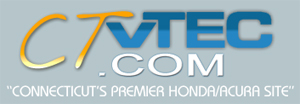




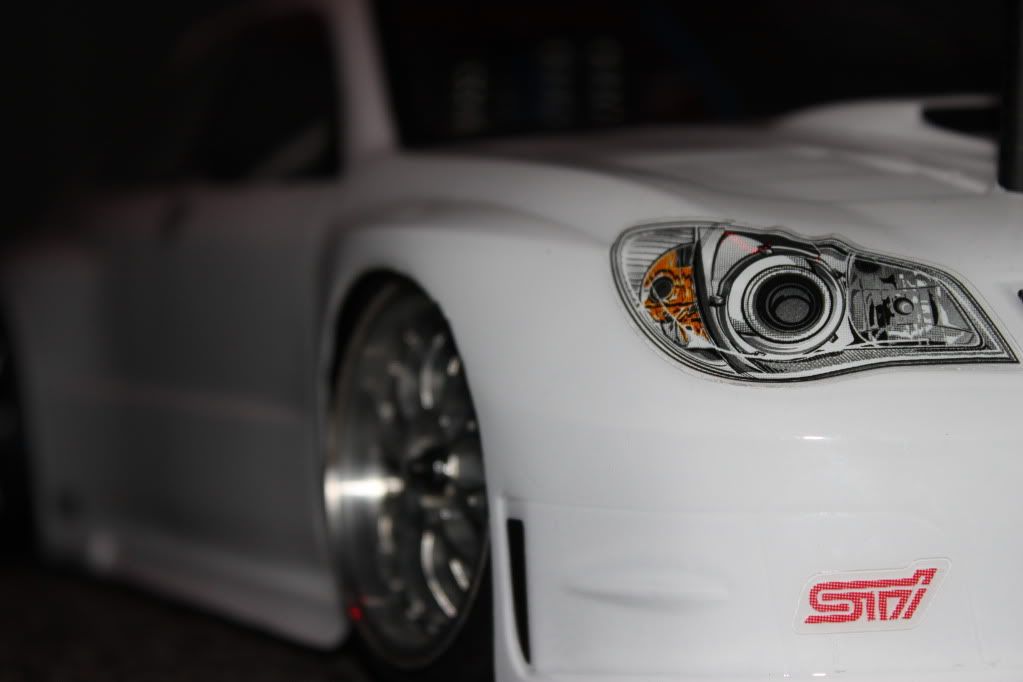
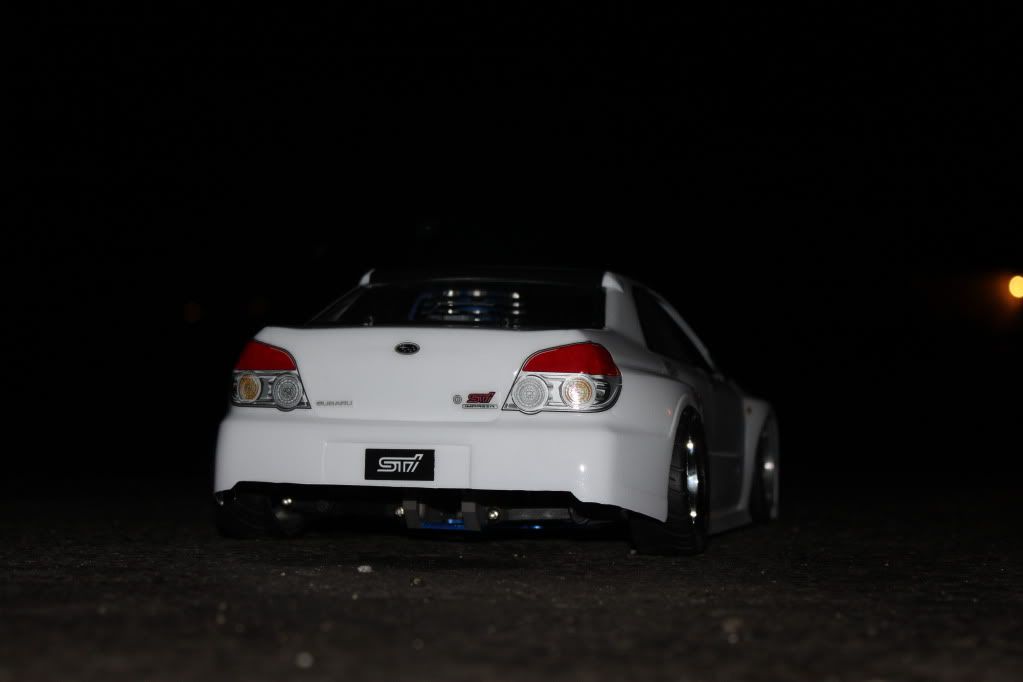
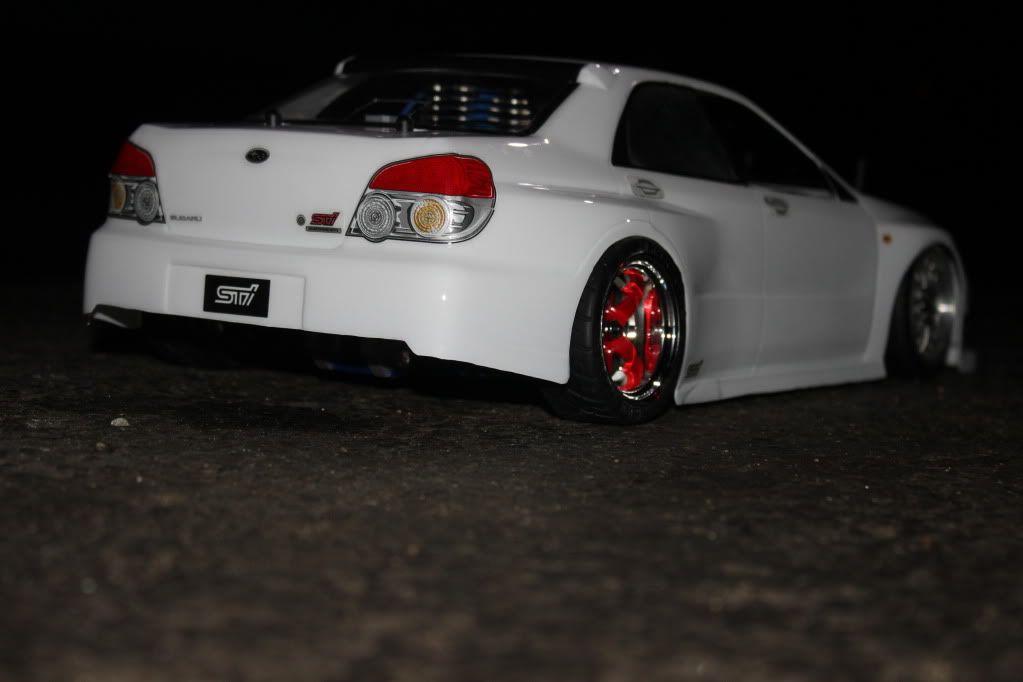
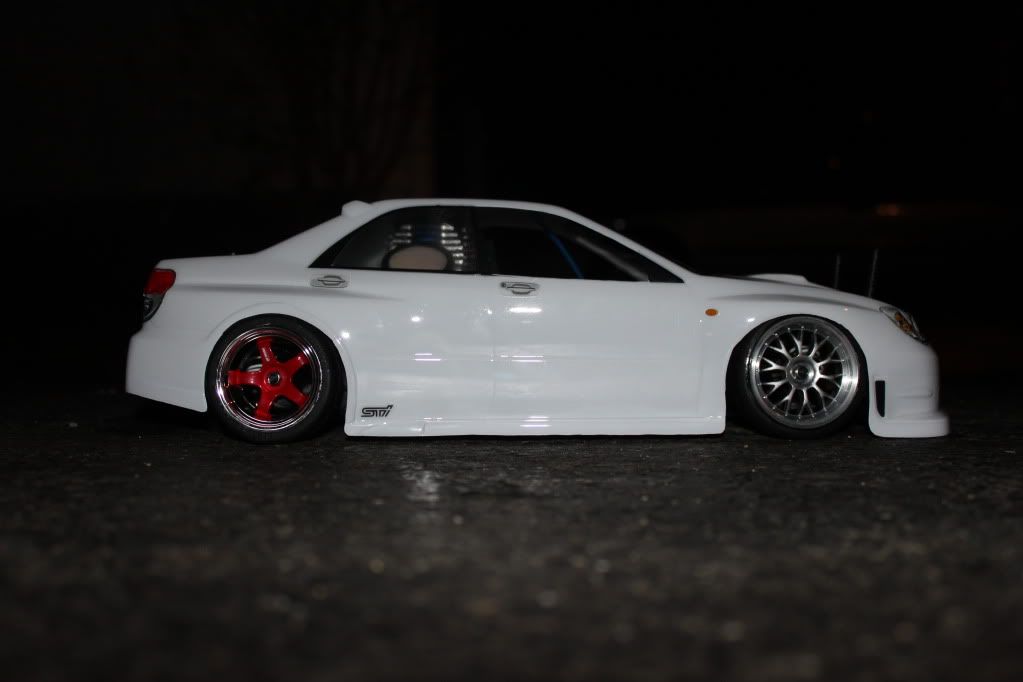


Comment